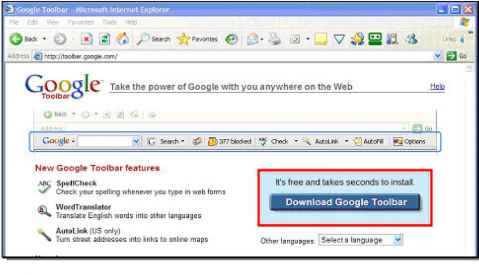Google Page Rank explained
When Google's spiders visit your site they not only do some quick math on your keywords, - but they also assign each page a "PageRank value" of 0 to 10.
Normally, the page with the higher PageRank gets listed ahead of those pages with a lesser PageRank.
So your goal is to get a higher PageRank than those who currently occupy the top positions at Google for any Primary keyword you are considering.
And the main way you get PageRank is with "Backward Links".
NOTE: Although the term 'Backward Links' is a Google term, - other search engines have similar ranking criteria.
So by optimizing for PageRank at Google, you simultaneously boost your link-popularity across the board.
What Google seems to be saying is, ...pages that have links back to them (backward links) MUST BE IMPORTANT.
.so let's make note of that and score it accordingly, - so that our visitors can find the important pages more easily than the others.
And because you can easily do a Backward Links check at Google, - for any keyword you are considering optimizing a page for, - then you can know in advance.
...how many Backward Links will be needed to outscore any site which currently hold top positions, - for that keyword, - at Google.
For instance, when I did a Backward Links check for 'barbecues', - a Primary keyword I'm considering optimizing one of my product pages for, - I discovered that sites occupying the top 5 positions for that keyword all had a PageRank of between 5 and 7, (high) - with Backward Link totals ranging anywhere from 173 to 2510.
Meaning, - forget about it!
I'll find another keyword.
And although it may be less searched than 'barbecues', I will at least have a shot at high rankings.
But, normally if you stay very product focused, - YOU won't have this kind of competition.
Later you will be shown how to specifically organize all of your internal links for MAXIMUM PageRank.
My strategy for doing this is the most-up-to-date insider knowledge available, - so powerful in fact that I considered writing an entire manual on the subject.
So please pay special attention to the Google PageRank procedures that follow, - as well as Step-8, Building Traffic from Multiple Sources.
There is a right way to do it.
And there is a wrong way to do it.
So, I hope I've convinced you that by doing Backward Link checks at Google for all of your keywords prior to building pages around them; - you will gain one heck of a competitive advantage over Webmasters with no knowledge of how PageRank works.
I will now walk you through the process of downloading Google's' control menu onto your browser, - so it's right in front of you whenever you need to do the all important Backward Links check.
Time to get your Google eyes.
Go to Google at http://toolbar.google.com/ and follow the steps needed to install the Google toolbar.

With your Google Toolbar installed into your browser, you can now quickly and easily do the following strategic maneuvers:
1. Search the web for any keyword you're considering.
2. Make note of the PageRank for each of the top sites found.
3. Do a Backward Links check for each of the top sites found.
|
y Back - |
) ' fl 1 ti | |||
|
J GO | ||||
|
Google - |
3 Search - |
377 blocked "i Check |
■V, AutoLink - AutoFill fj] Options |
Continue reading here: Choose your Tier2 Secondary Keywords
Was this article helpful?

